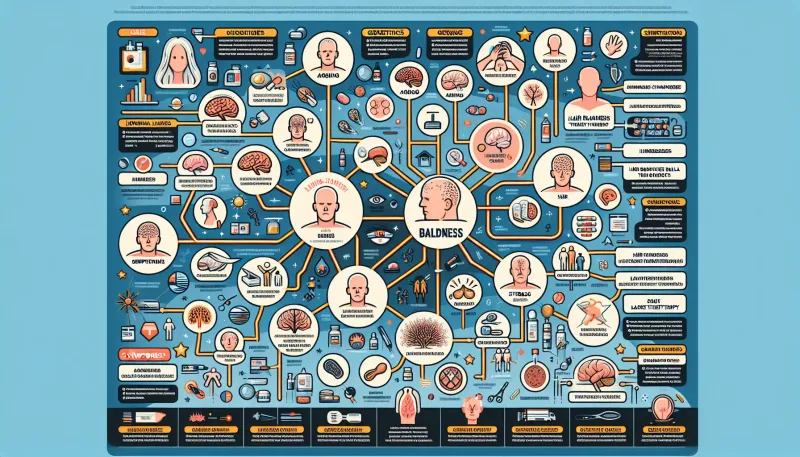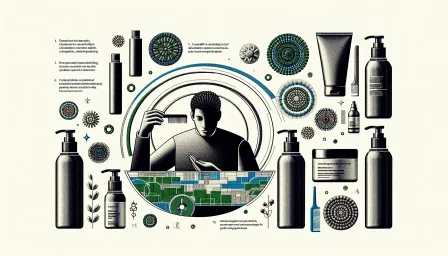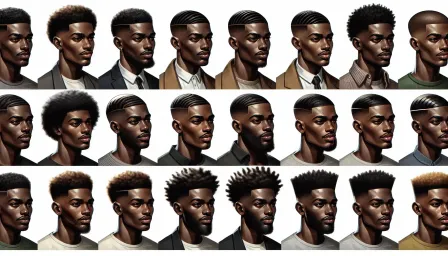Understanding Baldness Causes and Treatment Options: Your Ultimate Guide

Discover the causes of baldness and explore the best treatment options in our comprehensive guide. Learn more to make an informed decision about your hair loss journey.
Hair loss, commonly known as baldness, affects millions of people worldwide, impacting their confidence and self-esteem. Understanding the causes of baldness and available treatment options is crucial for addressing this common issue effectively. This comprehensive guide delves into the various factors contributing to hair loss and explores the treatments that can help you regain your hair and confidence.
Causes of Baldness
Genetic Factors
One of the primary causes of baldness is genetics. Androgenetic alopecia, commonly referred to as male or female pattern baldness, is a hereditary condition where hair follicles are sensitive to androgens (male hormones). This sensitivity causes the follicles to shrink over time, leading to thinning hair and eventual hair loss.
Hormonal Changes
Hormonal fluctuations can also contribute to baldness. For instance, women may experience hair thinning during pregnancy, menopause, or due to conditions like polycystic ovary syndrome (PCOS). Similarly, men can experience hair loss due to changes in testosterone levels as they age.
Medical Conditions
Certain medical conditions can cause hair loss, including thyroid disorders, autoimmune diseases such as alopecia areata, and scalp infections. These conditions can disrupt the normal hair growth cycle, leading to temporary or permanent baldness.
Medications
Some medications can have side effects that include hair loss. These include drugs used to treat cancer, arthritis, depression, heart problems, and high blood pressure. If you suspect your medication is causing hair loss, consult your doctor for alternatives.
Physical and Emotional Stress
Stress, whether physical or emotional, can lead to hair loss. Physical stress from surgeries, illnesses, or significant weight loss can trigger telogen effluvium, a condition where hair enters a resting phase and falls out more easily. Emotional stress can also impact hair health, leading to similar outcomes.
Poor Nutrition
A diet lacking in essential nutrients can affect hair growth. Deficiencies in iron, protein, vitamin D, and other vital nutrients can lead to thinning hair and baldness. Ensuring a balanced diet rich in these nutrients is essential for maintaining healthy hair.
Treatment Options for Baldness
Medications
There are several FDA-approved medications for treating baldness. Two of the most common are:
- Minoxidil: Available over the counter, minoxidil is a topical solution that can be applied directly to the scalp. It is effective for both men and women and works by stimulating hair follicles and prolonging the growth phase of hair.
- Finasteride: This oral prescription medication is used primarily for male pattern baldness. Finasteride works by inhibiting the production of dihydrotestosterone (DHT), a hormone that causes hair follicles to shrink.
Hair Transplant Surgery
For individuals with significant hair loss who desire a more permanent solution, hair transplant surgery can be an option. Two main techniques are used:
- Follicular Unit Transplantation (FUT): This method involves removing a strip of scalp from the back of the head and dissecting it into individual follicular units before transplanting them to the balding area.
- Follicular Unit Extraction (FUE): In this technique, individual hair follicles are extracted directly from the scalp and transplanted to the balding site. FUE is less invasive than FUT and results in minimal scarring.
Laser Therapy
Low-level laser therapy (LLLT) is a non-invasive treatment that uses red light wavelengths to stimulate hair growth. It is thought to work by increasing blood flow to the scalp and enhancing hair follicle activity. LLLT can be administered through devices like laser combs, helmets, or in-clinic treatments.
Platelet-Rich Plasma (PRP) Therapy
PRP therapy involves drawing a patient's blood, processing it to concentrate the platelets, and then injecting the PRP into the scalp. The growth factors in PRP are believed to stimulate hair follicles and promote hair growth. This treatment is gaining popularity due to its natural approach and promising results.
Scalp Micropigmentation
Scalp micropigmentation (SMP) is a cosmetic procedure where tiny, pigmented dots are tattooed onto the scalp to simulate the appearance of hair follicles. SMP can create the illusion of fuller hair or a closely shaved head, offering an immediate visual improvement for those with thinning hair or baldness.
Wigs and Hairpieces
For those seeking non-medical solutions, wigs and hairpieces offer a quick and effective way to address baldness. High-quality wigs made from human hair or synthetic fibers can provide a natural appearance and boost confidence. Custom hairpieces tailored to fit an individual's head shape and hair color can also offer a seamless solution.
Conclusion
Baldness can be a challenging condition to manage, but understanding its causes and exploring the various treatment options can empower you to make informed decisions about your hair health. Whether you choose medications, surgical procedures, or non-invasive treatments, numerous solutions are available to help you regain your hair and confidence. Consult with a healthcare professional to determine the best course of action for your specific situation, and take the first step towards addressing hair loss effectively.



























